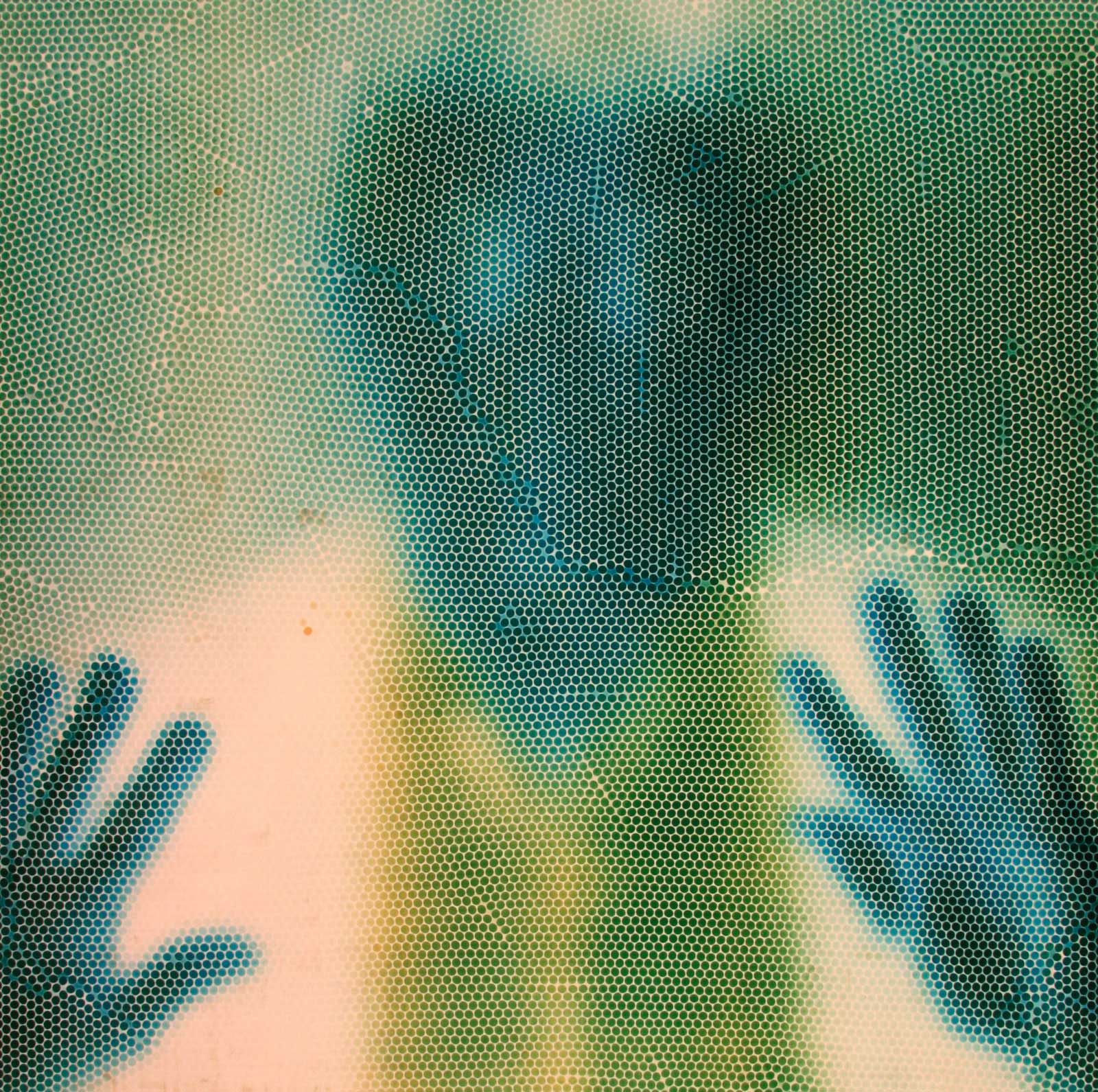The Straw Camera was a joint venture by Mick and myself started in 2007. We were motivated by our mutual interest in creating images in the most direct manner possible. Mick in particular had an active interest in pinhole image making. On a summer school course we converted a Polaroid camera to a pinhole and had some fun with that.
But there is very little in common between the pinhole camera and a straw camera. The pinhole gives an entire image from a single point perspective. The Straw Camera, which is a box stacked with approximately 23,000 black drinking straws, produces a multipoint perspective from an array. The light viewed/collected by each individual tube is recorded onto the photo sensitive material placed at the opposite end. By going straight on to paper, it is a direct analogue process.
We talked things over and lashed up a small box prototype to test. That worked and we decided that it might prove interesting to make a bigger camera, so we built a 20 X 24 inch camera. After initial tests with black and white we used colour paper as a negative. Then we contact printed to another sheet of colour paper (both without maker’s logos on the back), finishing up with a positive image.
The straws have a “raw” ƒ stop, where a 10” (254mm) long, 2mm diameter straw, gives an aperture of about ƒ127, and this was used as a rough starting point for exposure. There isn’t depth of field - the clarity of image produced by the straws recedes into the picture plane.
The Straw Camera gives a straight indexical rendering of whatever is put before it; a direct 1:1 view of the subject. Each straw has it’s own density and hue. The multipoint perspective lends itself to a passing nod to the Euston Road School of painting, with its passion for accurate depiction, and at the same time suggests a “pointillist” impression. The Mk 1i camera consisted of a 10 inch deep box with a Perspex front on it, to stop the straws from falling out, and to which filtration could be taped, using theatre lighting gels. This was our initial thought, but after a few tests we decided that it was filtering too much light so the gels were dispensed with, Mick determined that colour control could be done at the contact printing stage. The Mk 1ii had a hinged back and a more solid construction.
Our first images were of still life, as objects don’t fidget or get annoyed, allowing us to hone our skills in production. We used flash bursts to build up a workable exposure. However it was portraiture that we thought would be more intriguing. The sitter would have to wait in the dark whilst the camera was loaded. They were then asked to take a pose and given a countdown to the firing of the flash. The majority of our output was portraiture. We attempted to get examples of these shown in the RA summer exhibition, but were rejected each time. Mick would pull my leg, saying that if the application were in his name alone it would be accepted, as people on the selection panel were more likely to know my name and act accordingly.
I was slightly disillusioned by the output from the initial camera, the straws were never going to be even, the camera had it’s own signature, changing slightly each time a few more were added as they settled in the box. I thought a similar, more even field could be obtained using corrugated black plastic protective floor sheeting instead of straws. Mick had cut and built our second camera before I could come in and mess it up! This second version has its own signature - Mk 2 was up and running!
Mick was a better promoter than I, and it was through his endeavours that we were cited, with a colour illustration in the Focal Press publication, Exploring Photography, from Film to Pixels. (1)
The Straw Cameras gave us a “net” to catch light with, and a novel view of the world to play with. The portraits depict the sitters at a resolution that is almost on a par with early television pictures. Whilst not being the minimal level of rendering, like the famous block portrait of Abraham Lincoln (the “Lincoln illusion” rst reported by LD Harmon in 1973) (2), they sit on a borderline of recognition and it helps to know the subject. In a world beset by selfies with their immediate gratification, and HD television in all its glory feeding our visual appetite, a Straw Camera image of an individual, with its engineering projection and disappearance of the subject into the near fog of visual capture, gives the viewer a glimpse of just how transitory perception is.
Mick was a good friend and brilliant colleague to work with. I shall round this off, not with reference to the Straw Camera, but with an anecdote concerning our working together.
While presenting introductory workshops to first year students that were taught in tandem, we would ‘pass the baton’ at various stages during the course. Because of the repetitive nature of these workshops, one way of relieving and enlivening the proceedings during the studio lighting sessions was to refer to a term rarely used in photography these days; ‘For Candle Power’. This reference to the two Ronnies and their Four Candles or Fork Handle sketch was greeted by laughter on the part of those in the know, and bemusement by the rest.
I like to think that this book would similarly raise a few smiles.

Notes
1. Hirsch, R (2011) Exploring Photography, from Film to Pixels. 5th Ed. Oxford: Focal Press p158
2. Harmon, L. D. (1973). The Recognition of Faces. Scientific American (1973 Nov) 229(5):71-8